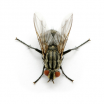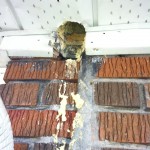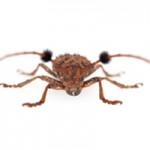Drain flies, also known as, sewer flies, moth flies or filter flies are commonly noticed around drains but should not be mistaken for the fruit fly, Phorid fly or Sphaerocierid fly which also infest drains. The drain fly always prefers to breed in sewage contaminated drains, septic tanks, sewers and soil. Drain flies are most commonly black but may be brown. Their life cycle is between 10 – 27 days from start to finish.
During the day they rest on tubs, in shaded areas or on walls near plumbing fixtures. They are mostly active during the evening and are often hovering around the sink areas in your home.
To help control drain fly infestations no water should be left behind the refrigerator, in the kitchen or dishwashers. If you find stagnant water in places it becomes a breeding ground for the drain fly. Make sure to provide proper ventilation in stuffy places, and do not allow water to stand in bathrooms.
Open windows and doors in your bathrooms, make sure your drains are clean and not blocked, sanitize walls, counter-tops and furniture that they may have landed on and clean your floor drains with hot water and bleach.
Fruit flies are identified by its bright red eyes with light yellow body colour. These files can be found all over the world, in homes, food processing plants, warehouses, grocery stores, wineries, restaurants and other structures. They love kitchens, garbage and are generally found hovering over decaying or overripe fruit and veggies.
The fruit fly’s life cycle from eggs to adult in 8-14 days. Because of its lust for unsanitary areas they have a potential to carry disease-causing bacteria onto food products. Once a structure is infected with fruit flies, all possible breeding areas must be located and eliminated. Breeding sites should be removed and cleaned. These steps will help control the fruit fly pest.



